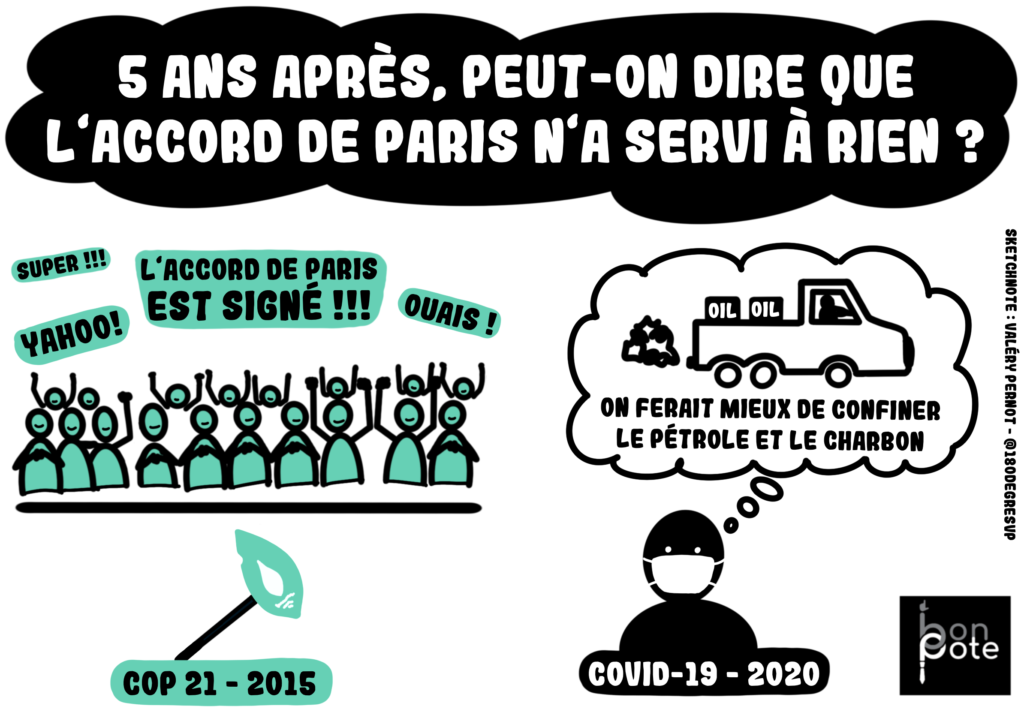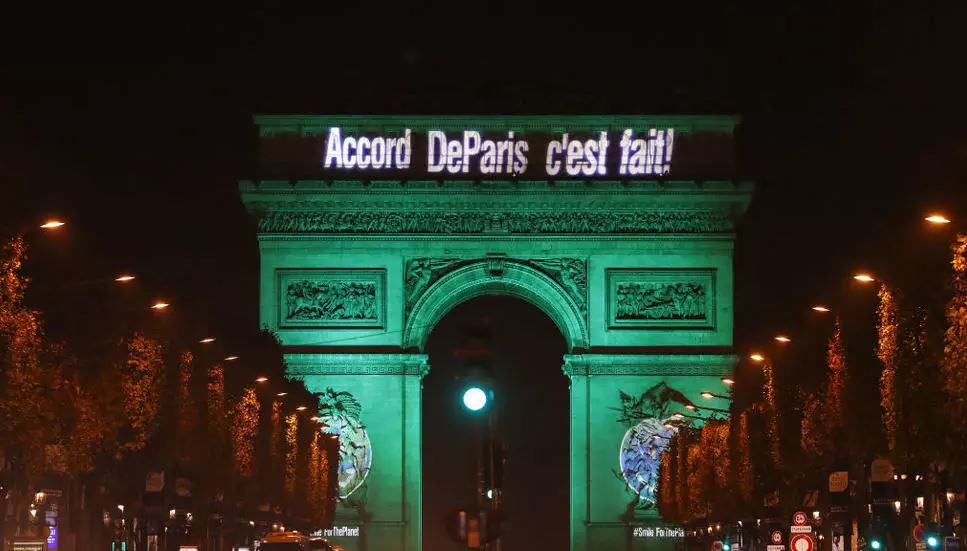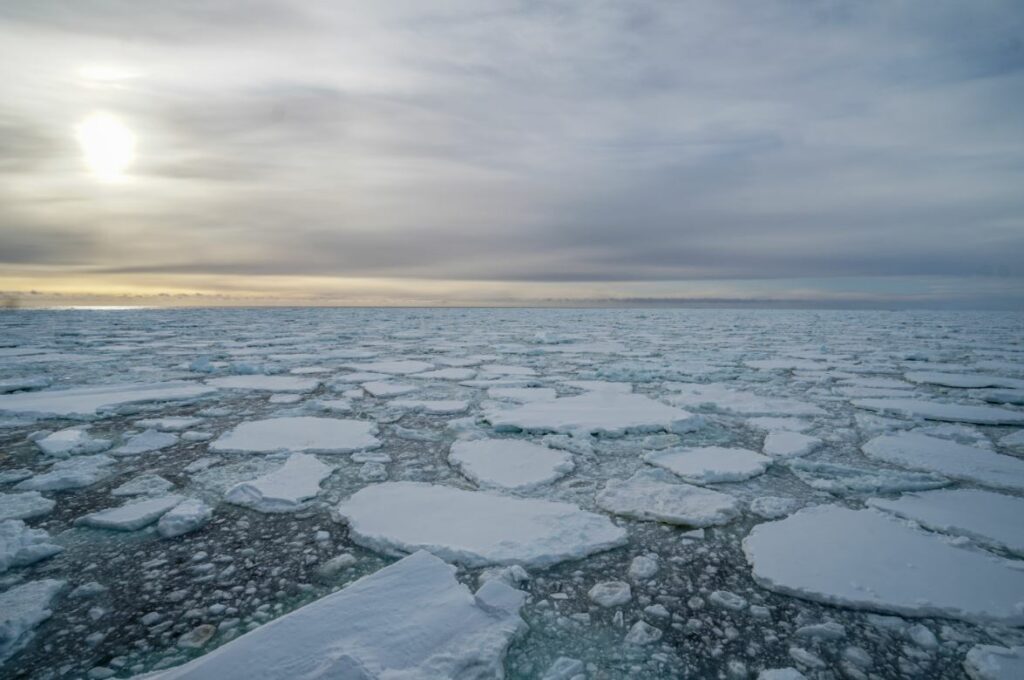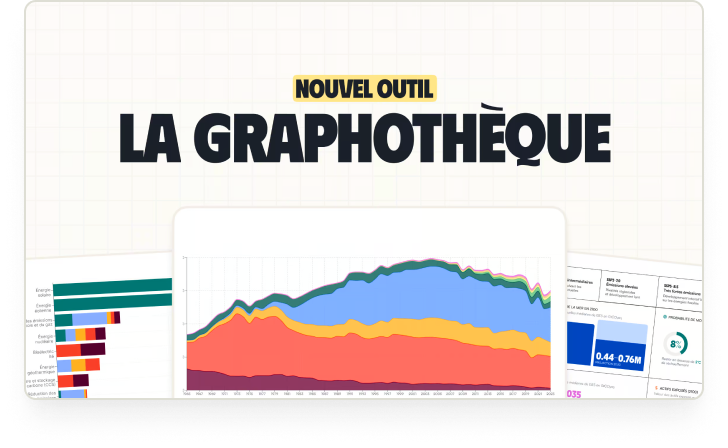This week, we celebrate the 5th anniversary of the Paris Agreement, a historic turning point for countries towards a sustainable world. In any case, this is what we can read since Monday morning in several articles of the French press, obviously very confident about the possibilities of limiting warming to +2 degrees.
The Paris Agreement is a bit like the book Limits to Growth by Meadows: everyone talks about it, but very few have read it. It is not very long (28 pages), and anyone who has spent a few hours looking into the climate issue should be able to make a more nuanced critique than what I have been reading for the past 72 hours. Can we say 5 years later that it is a real success?
The Paris Agreement: blood, sweat and tears?
The Paris Agreement is an extension of what happened at COP15 in 2009 in Copenhagen: a beginning of an agreement, a semblance of a commitment to limit global warming to +2°C (not +1.5…). This commitment was not legally binding, nor was it accompanied by deadlines or quantitative targets. Clearly insufficient.
It was therefore necessary to bring these countries (parties) together again in order to ratify what had only been the beginnings in 2009. Easier said than done. Climate negotiations are like putting more than 150 people (here ‘parties’) with different interests in a room and hoping that they agree on something that at first sight will piss everyone off. In case you are wondering why the climate negotiations are so difficult to achieve and why we need to regulate the commodities trade as soon as possible, this map should enlighten you:
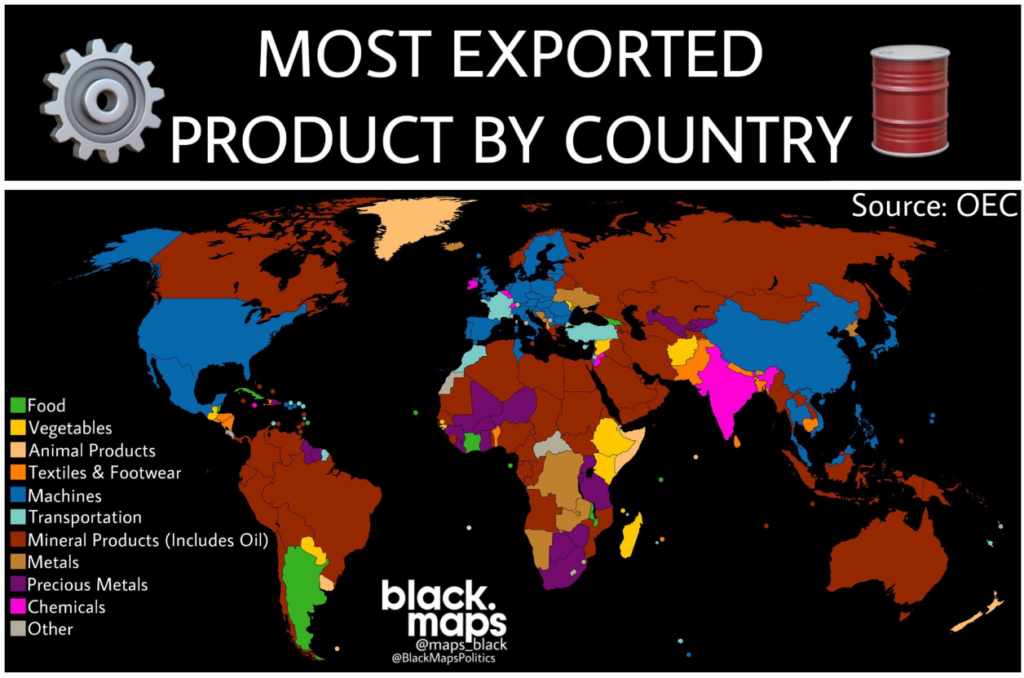
Key points of the Paris Agreement
After 3 weeks of negotiations, the agreement was finally reached:
At COP21 in Paris on December 12, 2015, Parties to the UNFCCC reached a historic agreement to combat climate change and to accelerate and scale up the actions and investments needed for a sustainable low-carbon future. The Paris Agreement is based on the Convention and – for the first time– brings all nations together in a common cause to undertake ambitious efforts to combat climate change and adapt to its consequences, with increased support to help developing countries do so. As such, it charts a new course in the global climate effort.
To date, 183 parties have ratified it out of the 197 parties to the Convention… But that was not the case at all on December 12, 2015! Entering into force on November 4, 2016, the agreement had then been ratified by only 55 parties, representing at least 55% of the estimated total global greenhouse gas emissions. This gives an idea of how difficult it is to get so many different countries to agree, at the same time, on a common goal.
Indeed, when you negotiate with oil countries, Brazilians on the left and Australians on the right (the Texans of the Pacific), finding an agreement is never won in advance… All the more so when each country pulls the wool over its own eyes, putting its own interests before those of others. You don’t need a PhD in geopolitics to understand that the fate of Fiji(a member of AOSIS) was not the first concern of the Saudis, who were too busy making sure they could continue selling their oil.
What do we learn from it?
To know the main aspects of the Paris Agreement, it is here (the whole Agreement here). I would like to draw attention to a few points:
– Five years ago, the notion of carbon neutrality was still a rather crazy ambition. Today, and especially in 2020, announcements have multiplied in this direction and it is becoming the norm, both for states and for companies.
– Before the Paris Agreement, the scenarios pointed to a warming of between 4°C and 6°C by 2100. With the national commitments made in 2015, the projected rise was then reduced to about +3.7°C. At the end of November 2020, according to Climate Action Tracker (TAC), we could expect (in ‘optimistic net zero targets’) a rise limited to +2.1°C.
– The Agreement works through an iterative process: Nationally Determined Contributions (NDCs) are planned to be increasingly ambitious, until carbon neutrality is achieved by 2050.

– Everything that is announced under the UNFCCC is in national inventory and not carbon footprint. Remember that some countries (just like Europe) are kings at announcing that they have lowered their emissions, when in fact they have just relocated them.
– Always ensure that carbon neutrality includes all GHGs, not just CO2: while most countries have set net zero GHG targets, South Africa and South Korea have committed only to CO2. New Zealand has committed to all GHGs except methane (CH4) from agriculture and waste.
– Responsibility for emissions is common, but differentiated: the Agreement highlights that some are more responsible than others, and will have to financially assist the countries most in need/affected by climate change. For more information, see the Green Climate Fund (GCF). This is very important, because it means that decarbonization efforts will not be made at the same pace for everyone (not to mention the sovereignty of States, which choose how they will do it).
The Paris Agreement under fire
As in any political arbitration, you will be forced to make concessions in the negotiations. The Paris Agreement is no exception. That’s not the main purpose of this article, but as it stands, NO ONE should be satisfied.
Firstly, it is clearly stated that growth will be needed, and this through technological innovation:

There is no need to remind what is happening with Green Growth and the illusion of saving technology. When we bet our future (and that of our children) on carbon storage and capture, we are either unconscious or we are playing the game of the status-quo and therefore of the murderers. Choose the word that suits you best. You will also notice that the word sustainable development appears 12 times. With a little experience, this should instantly alert you.
Secondly, and despite the beginning of Article 2, it is clear that the trajectory that emerges from the Agreement is +2 C° (minimum). Once again, the difference between +1.5 and +2°C: hundreds of millions of people are affected. It is not me who says it, but the IPCC. Not sure if the content had been solely written by AOSIS we would have had the same content.
Third, there is no obligation for states to meet their targets. No coercion or punishment. We must therefore take the States’ stated objectives (NDCs) at their word, objectives that they are required to update over periods that are too far apart (every 5 years).
Finally, and this is the icing on the cake, the Paris Agreement does not mention fossil fuels once! Geniuses! Oil ? Gas ? Coal ? Oh no, call back in 2030. It is absolutely fundamental to understand this: it is not an oversight, but the result of a power struggle. Toute avancée sur la queAny progress on the climate issue has always been achieved through a balance of power.stion climatique a toujours été obtenu grâce à un rapport de force. If this was not already clear, then relying on the state and companies would be a big mistake.
NEWSLETTER
Chaque vendredi, recevez un condensé de la semaine, des infographies, nos recos culturelles et des exclusivités.
ALERTE
Une alerte dans votre boite mail, pour être mis au courant dès qu’un nouvel article est en ligne sur Bon Pote
For 5 years, nothing has changed?
Let’s get one thing straight right away: it is WRONG to say that nothing has been done. FALSE to say that it was useless. This is a shortcut that I have read a good ten times in the last three days: it confirms our ideas, our confirmation bias (“ahah we didn’t do anything!!”), but it doesn’t help.
Before going into detail about what has been done in the last 5 years, it is important to remember that it is not possible to change the emissions curve so easily in 5 years. The climate issue cannot be solved in 5 years. It’s a long time: 20, 30 years. Some investments take time to show concrete results. This is exactly why we need to act now, continue to put pressure on governments and stop procrastinating.
Now let’s take the example of France. Many actions have been taken to align with the Paris Agreement. Here are some examples:
– At the national level, the SNBC, revised in 2019. Introduced by the Law of Energy Transition for Green Growth (…), the National Low-Carbon Strategy (SNBC) is France’s roadmap to fight against climate change. First adopted in 2015, the SNBC was revised in 2018-2019, aiming to achieve carbon neutrality in 2050 (an enhanced ambition compared to the first SNBC, which targeted Factor 4, i.e. a 75% reduction in its GHG emissions by 2050 compared to 1990).
– At the regional level, the SRADDET (Schéma Régional d’Aménagement, de Développement Durable et d’Egalité des Territoires – Regional Plan for Sustainable Development and Equality of Territories), which groups together the various sustainable development policies, and in particular those concerning climate, air and energy. If you think there’s nothing in place, I doubt you have this pattern in mind:
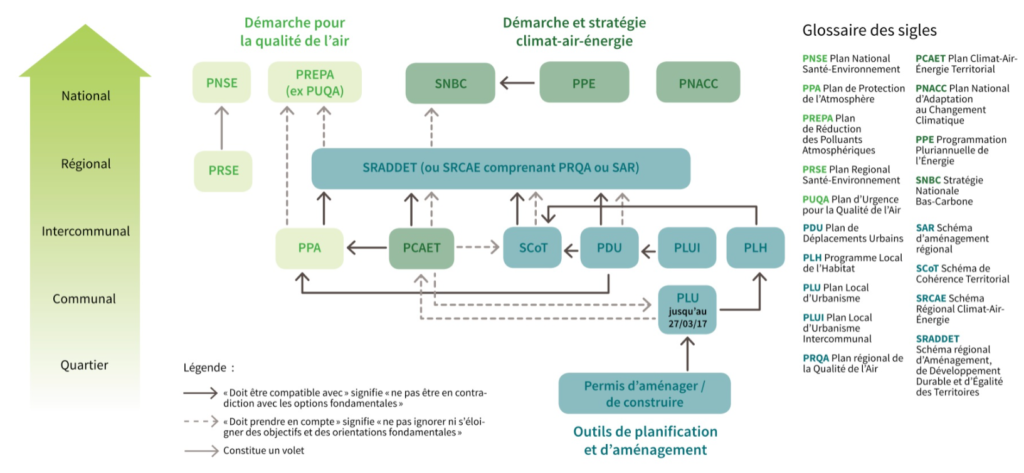
–At the inter-municipal level, the Territorial Climate-Air-Energy Plans (PCAET): 756 public establishments of inter-municipal cooperation of more than 20,000 inhabitants must carry out a territorial climate-air-energy plan (PCAET):

– The Paris Agreement has also had a positive effect on climate litigation. This is what Marta Torre-Schaub, director of research at the CNRS, explains to us: “cThis is a strong argument in a number of legal actions. I think there has certainly been a positive effect of the Paris Agreement on accelerating these types of trials.”
– The creation of the High Council for the Climate, each report of which gives valuable indications to the government in order to reach carbon neutrality. To learn more, here is an interview with the Executive Director, Olivier Fontan.
– The creation of the Citizens’ Climate Convention : despite all the criticisms of the world since 6 months, this convention and its members have the merit to bring the subject of the climate to the front of the stage, and to put enough pressure on E. Macron for him to get angry a week ago during his interview with Brut.
NB: the CCC and the HCC were created thanks to popular pressure: it is in particular thanks to the yellow vests and the climate marches that these 2 instances were created. Civil society therefore clearly has a role to play and we do not have the right to wake up in 2040 as if we were not aware of it.
I could also have mentioned the work of CEREMA, ADEME, etc… Yes, the French administration is not standing still on the climate issue. Many plans have been launched and there are already results.
Vigilance rather than optimism
If it is now obvious that the Paris Agreement was not useless, it would be credulous to believe that it is self-sufficient and that the States will do everything possible to achieve their carbon neutrality on a voluntary basis.
First of all, these are only commitments. Promises are only binding on those who listen to them. For my part, I will judge above all the results. Let’s not forget that all the announcements of carbon neutrality in 2020 have proven to be false! Moreover, the commitments of the Parties to the UNFCCC are in national inventories and not in carbon footprints. It is simply unacceptable that a country like France has had a stable carbon footprint for 25 years, and it is not with a government that talks to us about green growth at every television appearance that this is going to get better. When I say government, I could have said ‘our politicians‘, or even ‘our European politicians‘. Like Pascal Canfin who seems absolutely delighted to be in the top 3 of climate recovery plans:

Pascal is a bit like the guy who had 3/20 on a math test, and who laughed at those who had 0. We are very far from doing the right thing Pascal, no need to be a rooster.
Regarding the Paris Agreement, only 20 countries have long-term climate strategies, 20 have updated their strategy with a more ambitious NDC. Only 26 countries have announced that they are aiming for carbon neutrality. Out of more than 150 games, that’s not much… To follow the evolution of commitments, there is a very good site: Climate Watch Data. This gives us an idea of how far we still have to go.
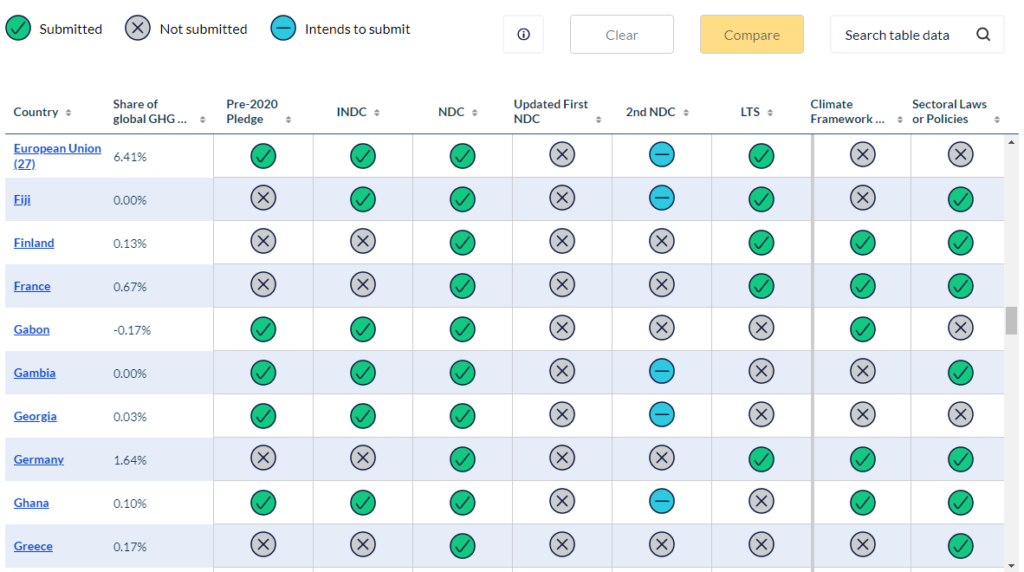
Finally, the EU must also get rid of fossil fuels. This is what this letter (signed by 200 scientific personalities) asks the signatory states of the ECT (Energy Charter Treaty): to get out of the ECT, as it is a brake on the energy transition, incompatible with the Paris Agreement. This treaty still offers the possibility for companies in the sector to sue states that oppose fossil fuel projects… A real scandal.
The last word
Climate negotiations are extremely complex and like many other subjects, it is impossible to understand them by reading a 20 line article or watching a 1min30 video. It is necessary to put the event in its context, to understand who took part in the negotiations, to understand what the Agreement says, what it allowed, what it deliberately concealed…
To answer the question ‘has the Paris Agreement been useless?’: the answer is no. Was it enough? Neither. Would it have been possible to obtain a more binding agreement? No one can answer that with certainty. The energy (and therefore geopolitical) stakes are such that any agreement that is too restrictive on fossil fuels would have ensured the failure of COP21. To learn more, I again recommend the book Governing the Climate by Stefan Aykut, a reference on the subject.
Rather than being resolutely optimistic, as the French press has been since the beginning of the week, I call for vigilance. Not only can we not be satisfied with what has been undertaken, but it seems that our government has still not understood (or is pretending to) that green growth is not the solution for our ecological transition. For 50 years we have been hearing the same discourses from the climare delayers, for 50 years they have been lying. Without sufficiency (and without the mobilization of all components of society) we will not succeed.
To conclude, and I will not stop repeating it: let’s stop saying that it is too late to limit warming to 1.5°C! This is the goal and must remain so. Any discourse that abandons this goal is simply selfish. It is physically possible: the rest is just political negotiations.
